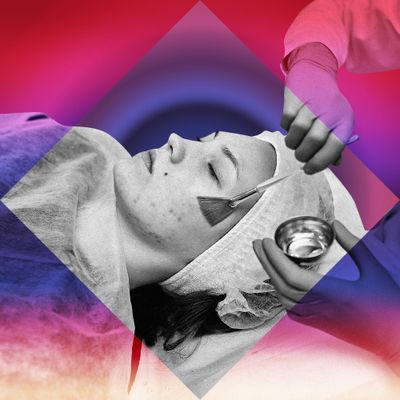
This column first ran in Valerie Monroe’s newsletter, How Not to F*ck Up Your Face, which you can subscribe to on Substack.
Q: My doctor recommended a periorbital phenol peel to reduce sun damage, fine lines, and wrinkles around my eyes. I’ve never been happy with my skin, so I’m ready. Have you written about this? Is there a lot of pain and downtime?
A: I’ve heard of various kinds of peels and I’ve even had some of them myself (alpha- and beta-hydroxy). But I’ve never been offered a phenol peel. When I emailed dermatologist Jessica Weiser about it, I found out why.
“The phenol peel is quite controversial,” she said. “It’s one of the strongest chemical peels available on the aesthetic market, as it penetrates into the dermis (the inner layer of the skin) and can be so painful that it requires sedation for the patient to be able to tolerate it.”
Weiser points out that the phenol peel also requires monitoring of vital signs because the chemical can have adverse effects on the cardiovascular system, the liver, and the kidneys.
Because of the systemic effect, a phenol peel is applied to one segment of the face at a time to allow the liver enough time to process the phenol and the kidneys enough time to excrete the chemical before more is applied in the next segment (the forehead, each cheek, the area around the mouth, and the area around the eyes each considered a segment). Weiser also advised that a phenol peel is appropriate only for lighter skin tones due to the risk of pigmentation issues. And it should also be used with caution when there’s rosacea or another inflammatory skin condition involved.
About the downtime: It can require multiple weeks or months to recover from the deep wounding, with significant crusting, oozing, and redness, she said.
And it can be expensive, up to around $6,000, depending on the areas you’re hoping to treat.
Now that I know the nitty-gritty, there’s one word that comes to mind when I think of a phenol peel: punishing. And I wonder whether the lines around your eyes merit the heavy artillery.
I have strong feelings about crow’s feet: I like them. Personally, I think crow’s feet are the least unbeautiful of wrinkles; you get them from squinting, sure, but also from a fully engaged smile — called the Duchenne — in which the corners of your eyes get crinkly. It lets people know you’re genuinely happy. That’s nice, right? Better: When people respond to your happiness, it precipitates a neural loop that can make you feel even happier. Am I saying crow’s feet are good for you? Kind of. Am I going too far suggesting the next time you notice them, you might take a moment to admire them? Not sure. Try it and let me know what you think.
Of course, if you disagree with me — I mean if there’s really a murder of crow’s feet on your face — you can choose to diminish them at the doctor’s office with a couple shots of neurotoxin like Botox or Dysport. This works because the drug freezes the muscles that, with repetitive movement, cause the wrinkles. Overdo it, and you lose the ability to make the Duchenne, so don’t. All options aside, it’s best to keep in mind that no one notices what you see as your flaws the same way you do.
Valerie Monroe was beauty director at O, The Oprah Magazine, where she wrote the monthly “Ask Val” column for nearly 16 years. Now she writes the weekly newsletter How Not to F*ck Up Your Face. Her goal continues to be to shift our thinking in the beauty arena from self-criticism to self-compassion and to learn how to be loving witnesses to ourselves and one another as we age.
More From This Series
- I’m 60 and My Retinol-Based Routine Stopped Working. What Do I Do?
- I Can’t Take My Eyes Off Donatella Versace’s New Look
- What to Do When When Eyeglasses Leave Their Mark


